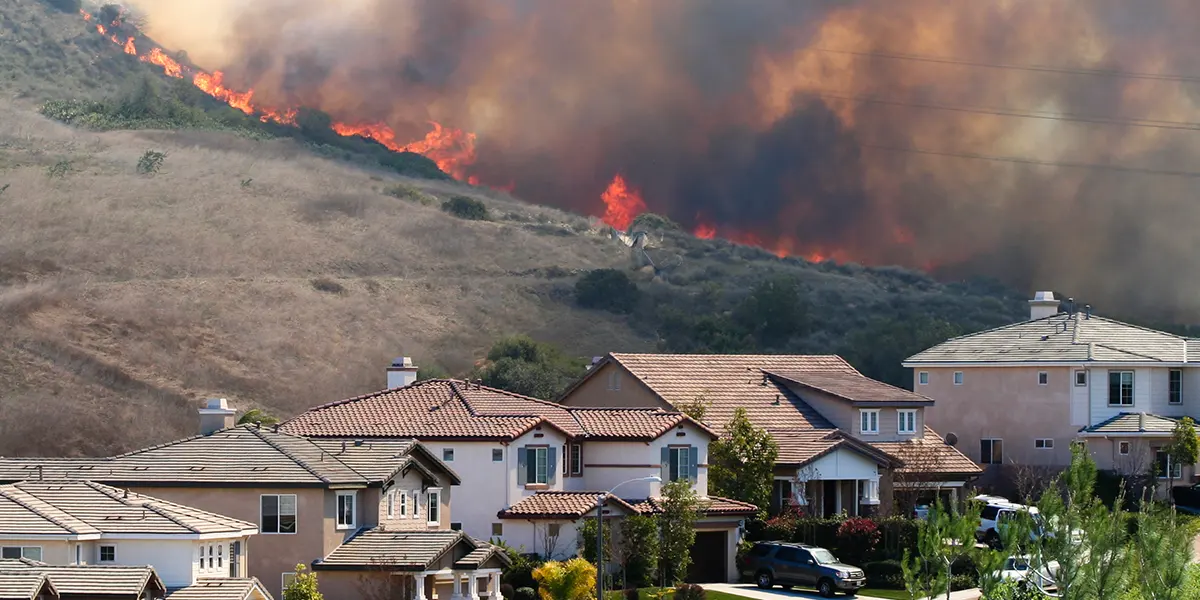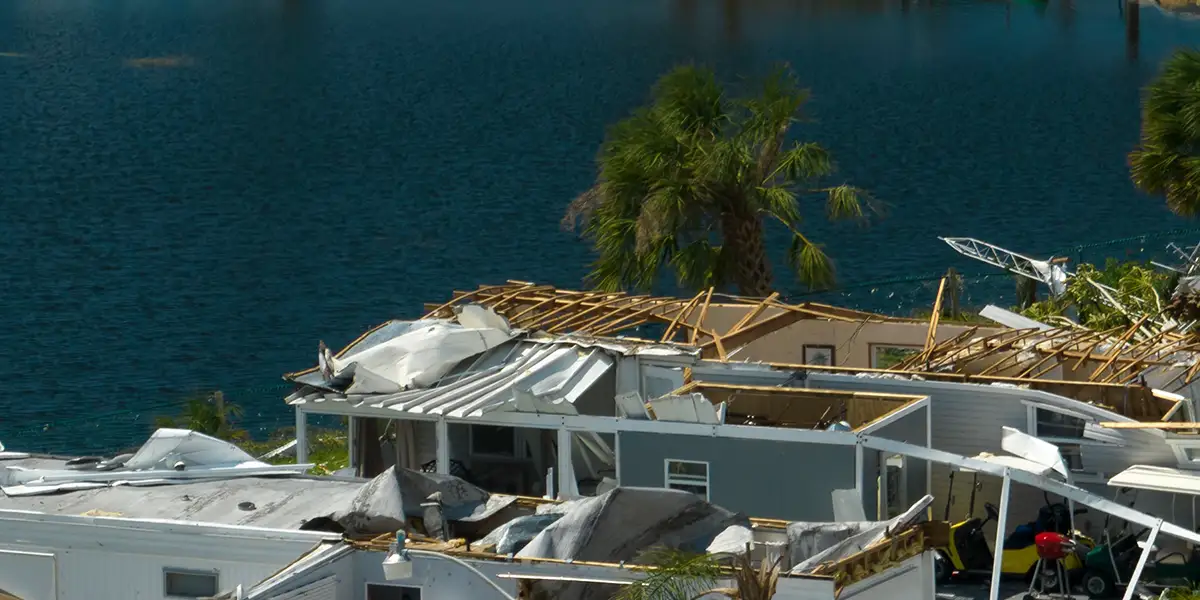Climate change can severely disrupt your business activity, thus biting into your resources. However, while climate risk assessment is a fundamental step to save you a lot of money, it can be a painful task if you can’t tap into accessible knowledge and productive tools. So, if you’re getting lost into climate science and regulation jargon, you landed in the right place. In this post, we’ll share everything busy CEOs need to know about climate change risks and how to turn them into business opportunities.
What are the climate-related risks for your business?
Despite Elon Musk's stellar efforts, it turns out that your business can’t relocate to Mars just yet. Which means Earth’s global warming will likely affect your operations. That’s why you’ve got to be aware of the risks you’ll be facing. When it comes to climate change, companies will have to deal with physical and transition risks.
Physical climate risks
The most tangible types of risks are the physical impacts caused to your offices, factories, logistics, financial asset portfolio, or even workforce by an extreme weather event such as floods, landslides or storms. On 18th February 2022, Eunice, the worst storm in 30 years hitting the UK, damaged hundreds of homes and disrupted businesses (i.e., power cuts) across the country.
Finance, real estate, insurance, energy. Regardless of the sector, every CRO, CEO, or asset manager will see their wallet lighten because of these climate-driven natural disasters. Of course, insurers will be massively affected. According to PwC, Eunice will cost them up to £360 million. To add to that, properties located in high-risk areas are going to lose value and will incur costly maintenance. Accordingly, mortgages may struggle to keep up with payments as the cost of fixing their houses may compromise their financial reliability. This is a key point to price in when performing a climate change risks assessment for banks and financial institutions. In fact, Moody’s Analytics predicted that storm Ida will cause up to 18% of Louisiana mortgage borrowers to miss at least 3 payments. In addition, the firm forecasted up to $14 billion worth of mortgage loans to be at risk of default.
These are just some of the many physical climate risk examples you may be exposed to. And the situation is only getting worse. For instance, according to McKinsey, by 2040 hurricanes will be 4x more likely to cut off chip supply. These disasters will short circuit the energy sector development. In fact, a 5-month supply disruption will cost electric vehicle (EVs) makers and other companies in the electronics industry 35% of their annual revenue. On the other hand, if your company puts in place some preventative measures (e.g., helping suppliers strengthen their physical assets' resilience against hurricanes), it will only experience a 5% loss.
However, you can’t brace yourself for something if you don’t see it coming. So, is there any way to know how to quantify and manage these climate risks before counting their hefty costs? Yes, you can leverage Climate X Spectra to do that.
Transition climate risks
While the physical impact picture immediately brings “The Day After Tomorrow” sci-fi movie to mind, transition climate risks are much harder to visualise. As the name hints, these kinds of risks are triggered by the transition to a low-carbon economy. For instance, the enforcement of stricter emission rules in the construction sector will force you to make your properties more energy efficient (e.g., installing insulation systems). Also, if you work in the energy industry, you’ll have to diversify your portfolio as the demand for oil will likely go through the floor.
Liability risks
Global warming unkindly offered a premium risk to insurance companies. On top of physical and transition impacts, liabilities are climate change risks which are unique to the insurance sector. Clearly, because of the higher frequency in climate-driven catastrophes, policyholders will flood insurers with claims. On the other hand, with upcoming stricter regulations on climate disclosure, your insurance company should also factor in a rise in third-party claims and the litigation risks potentially arising from them. And that’s because your business or some of your insured clients may face class actions, shareholder suits, or regulators fines because of a compliance failure.
How climate risk models bolster your resilience
What is climate resilience? And why is it important for businesses?
We’re aware you may struggle to read your favourite book during your lunch break, let alone the hypnotic IPCC definition of resilience. Instead, let’s focus on its latin root, which means “recoil”. In fact, a climate-resilient business will be ready to jerk back like a spring after being pressured by a force (e.g., a storm-driven 100-mile-per-hour wind).
The trouble is that some of the forthcoming climate risks are unavoidable. That’s why the only way for your company to continue functioning and thriving is to adapt to them. But you shouldn’t see climate adaptation as a cost. Aside from averting potentially huge losses, adaptation strategies will unleash new business opportunities such as reducing energy costs, gaining new clients, etc. To add to that, according to Natural Hazard Mitigation Saves, investing in climate resilience solutions (e.g., buildings’ flood defences, backup power storage, etc.) will have a 500% return and boost your sustainability.
After appreciating the importance of business resilience, it’s now time to find out how models will help you build it.
Climate risk models to the rescue
Climate risk models will give you a projection of how your business may be affected by natural disasters. This will buy you time to start planning for climate resilience, thus minimising your future losses.
Harnessing models’ money-saving power will make your life easier when preparing a Task Force on Climate-Related Financial Disclosure (TCFD)-aligned climate change scenario analysis. Scenario analysis is basically a forecast of how a certain global warming level (e.g., 2°Celsius) will impact your future development. In other words, it’s a climate resilience evaluation and awareness tool. As concerns TCFD, these are recommendations given to businesses to help them report their climate-related financial information. Besides providing guidelines on climate risk metrics, targets and transition plans, this policy encourages companies to use a climate change risk scenario analysis to quantify impacts and identify opportunities.
But why should a business comply with TCFD? For two key reasons:
- You don’t want to lose investors, who will support only those companies that are fully transparent on how they manage and mitigate their climate risks;
- If you work for a large firm in the UK, TCFD disclosure requirements are no longer an option as they’ve become mandatory in the UK from April 2022. To add to that, other companies and countries will follow shortly. In fact, the US. The Securities and Exchange Commission (SEC) will soon require publicly listed American companies to share their climate-related risk and greenhouse gas (GHG) emissions.
Next steps
Adapt or perish. While it sounds harsh, that’s the bitter reality of climate change (and evolution in general), so you'd be better off starting asap. Yet, this can be a challenging and time-consuming process. Also, while climate risk models are a powerful tool, their results are not always right and easy to understand. So, as you can imagine, their interpretation and translation into meaningful data could give you headaches. That’s why Climate X is offering its intelligence to help you make the most out of them. If you don’t know where to start, just give us a shout. We’ll be happy to lend you our expertise on how to improve climate resilience and gain a competitive advantage in your sector.
Start your journey today with our team, and book a demo to see Climate X Spectra in action.





